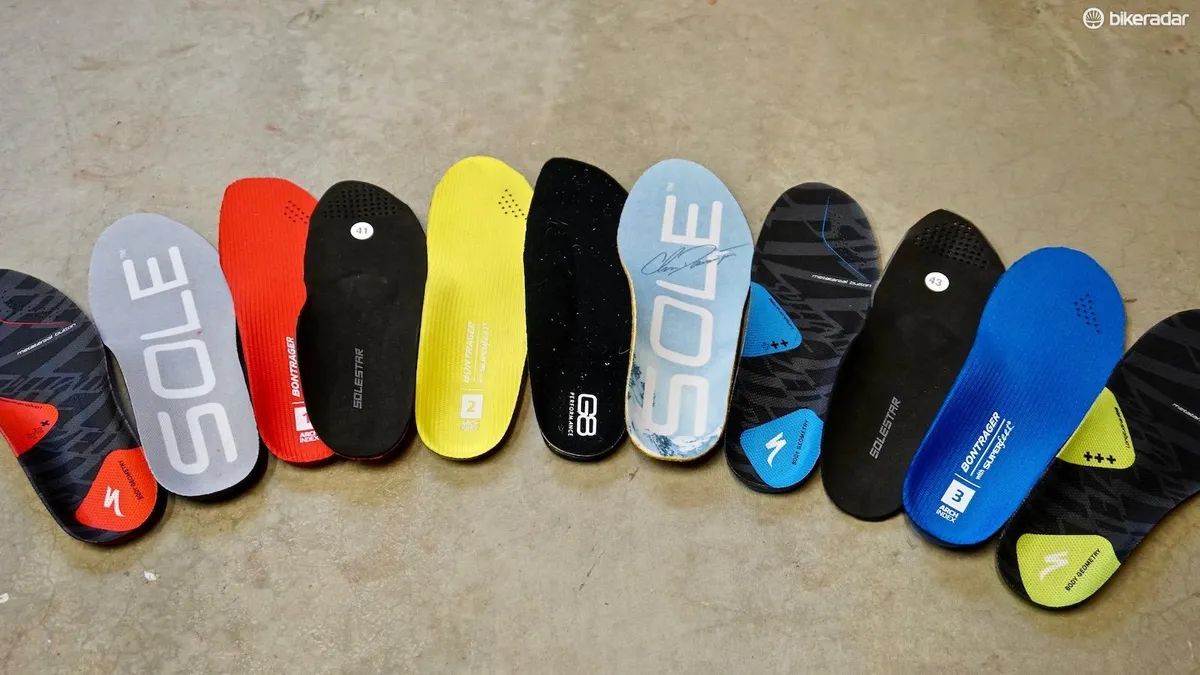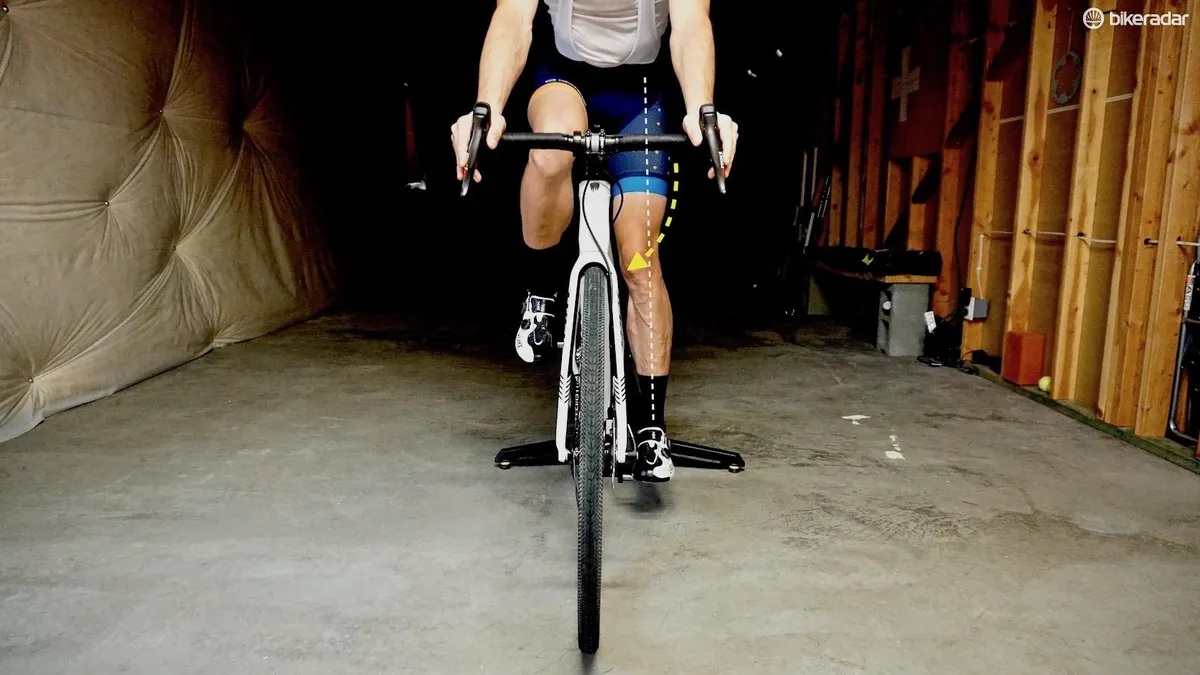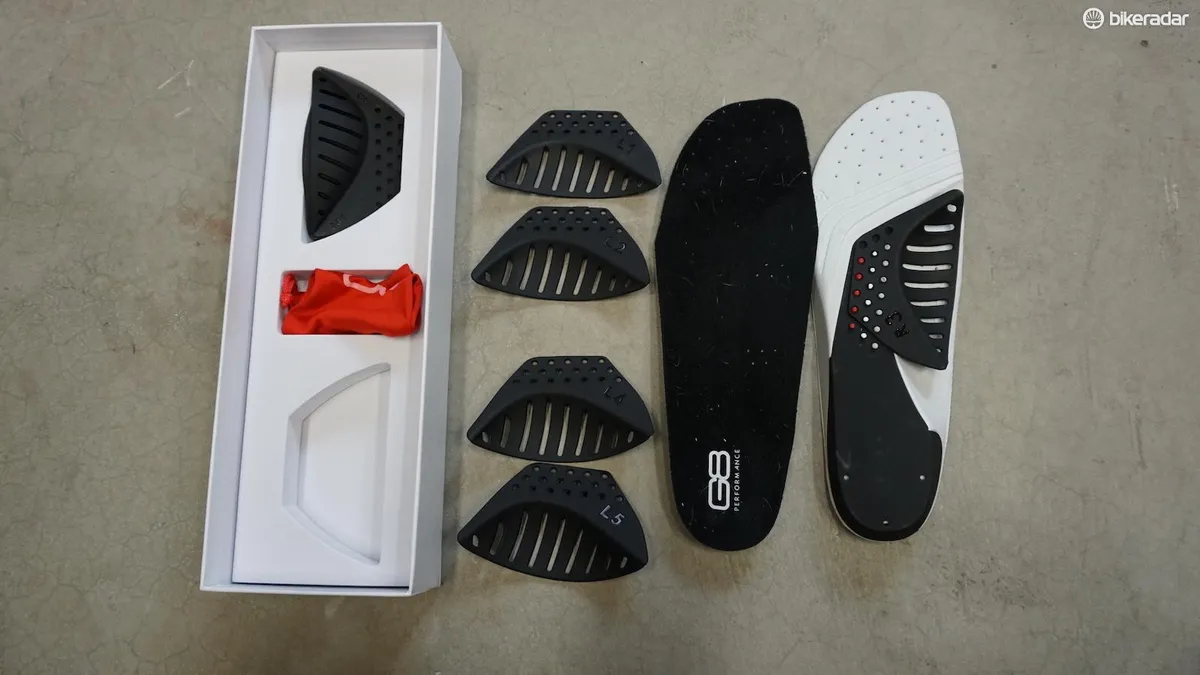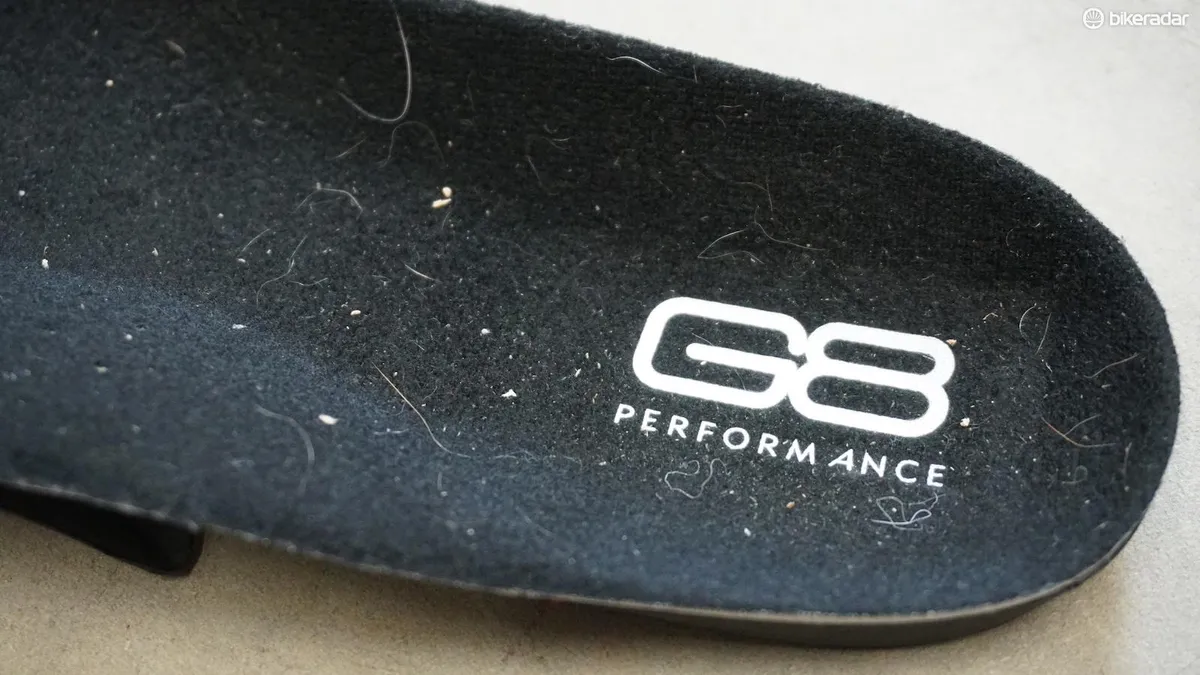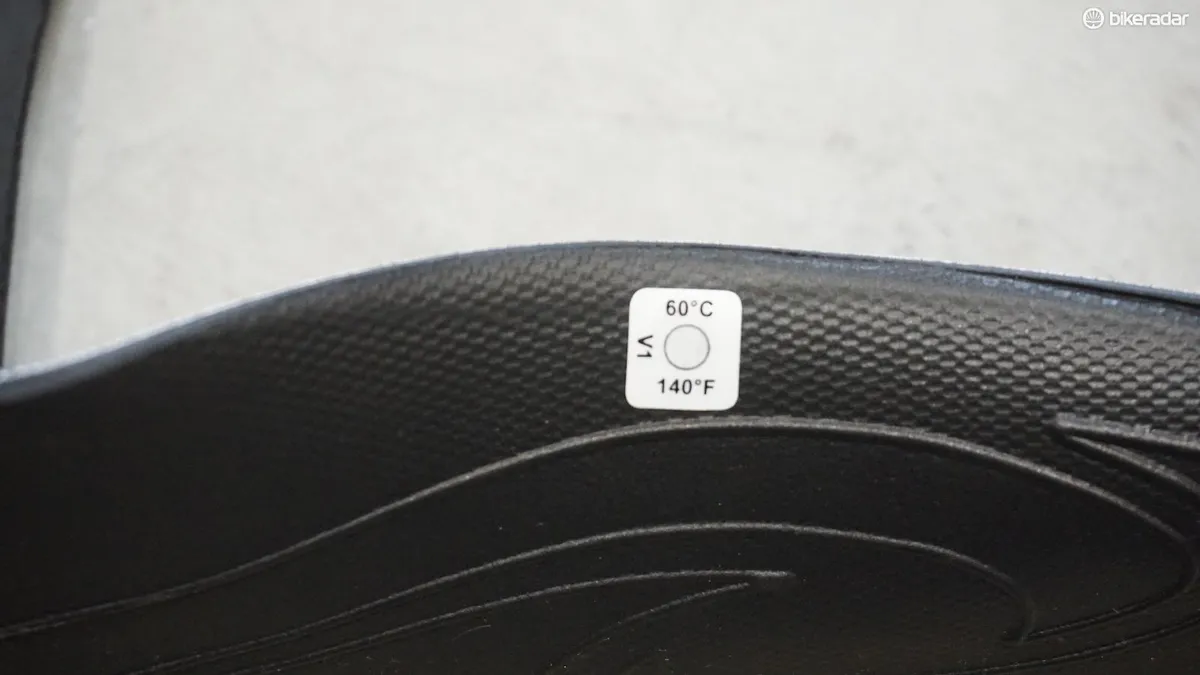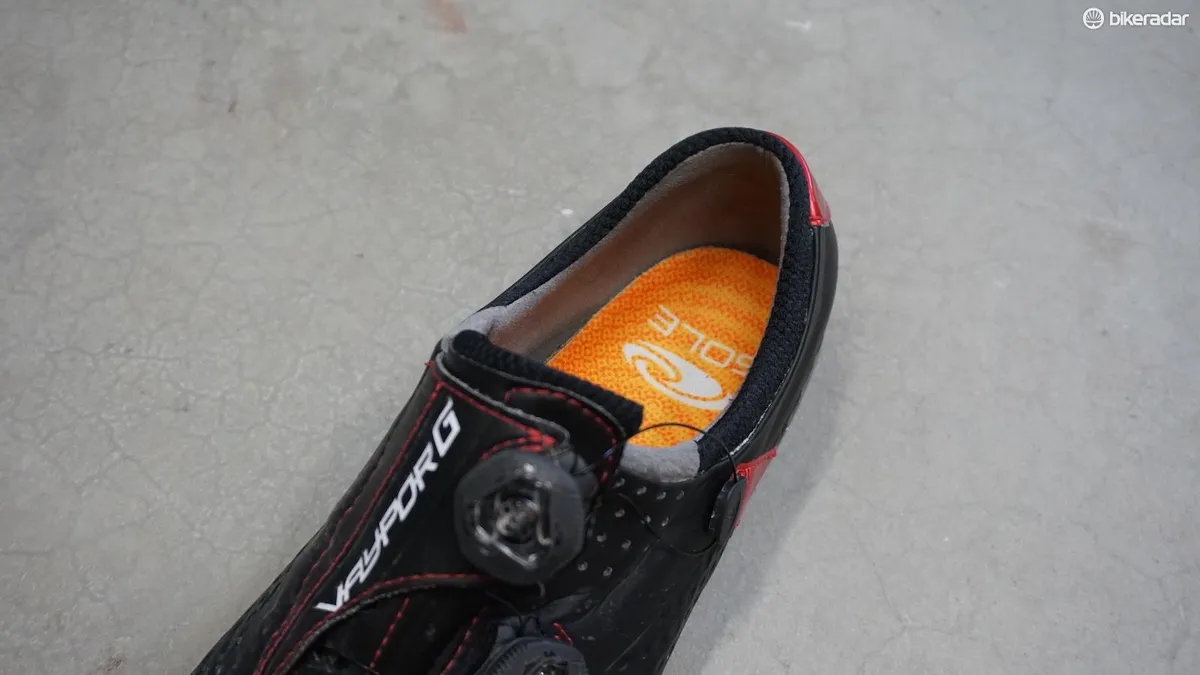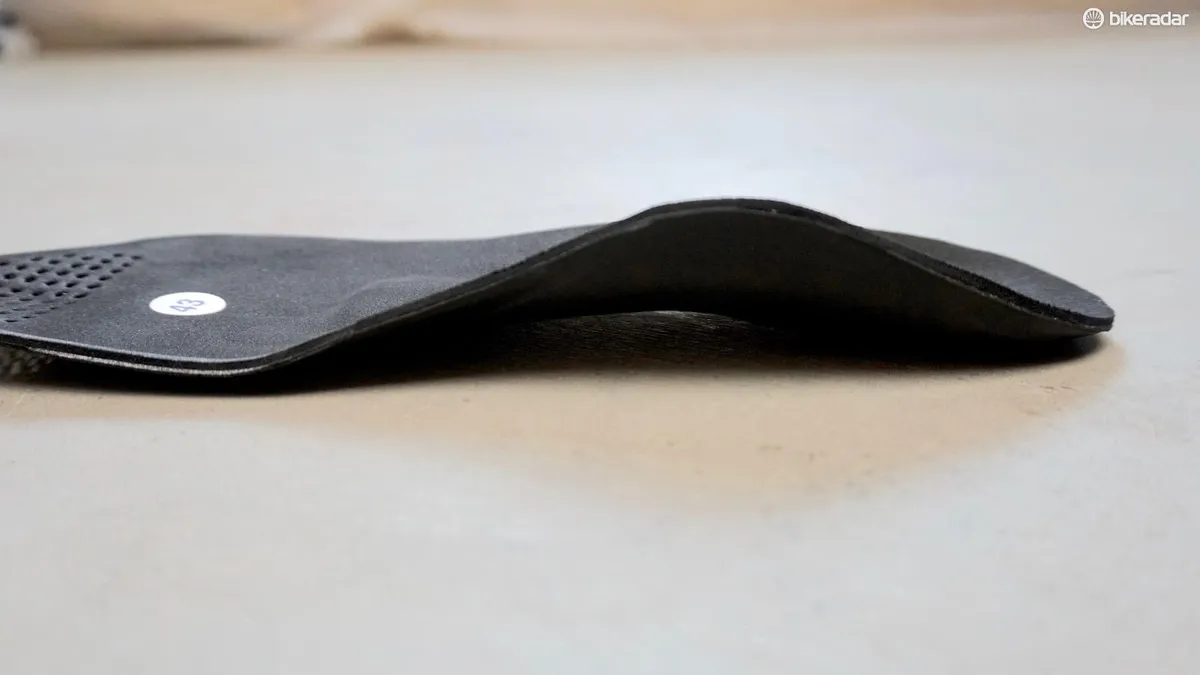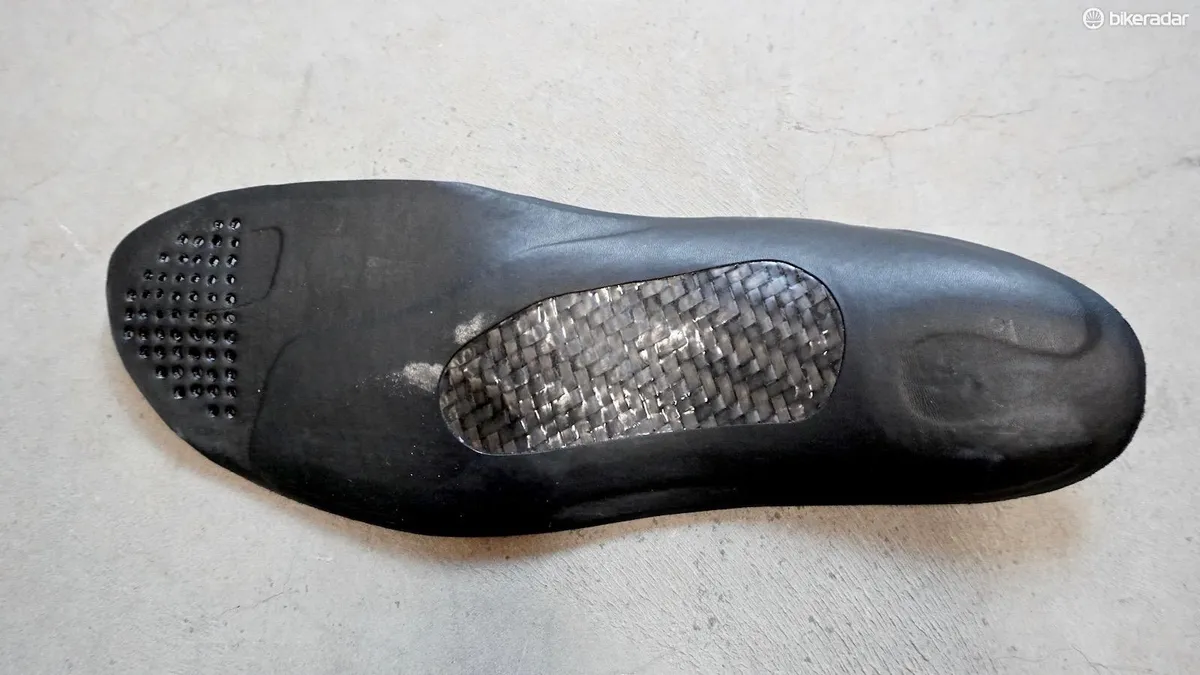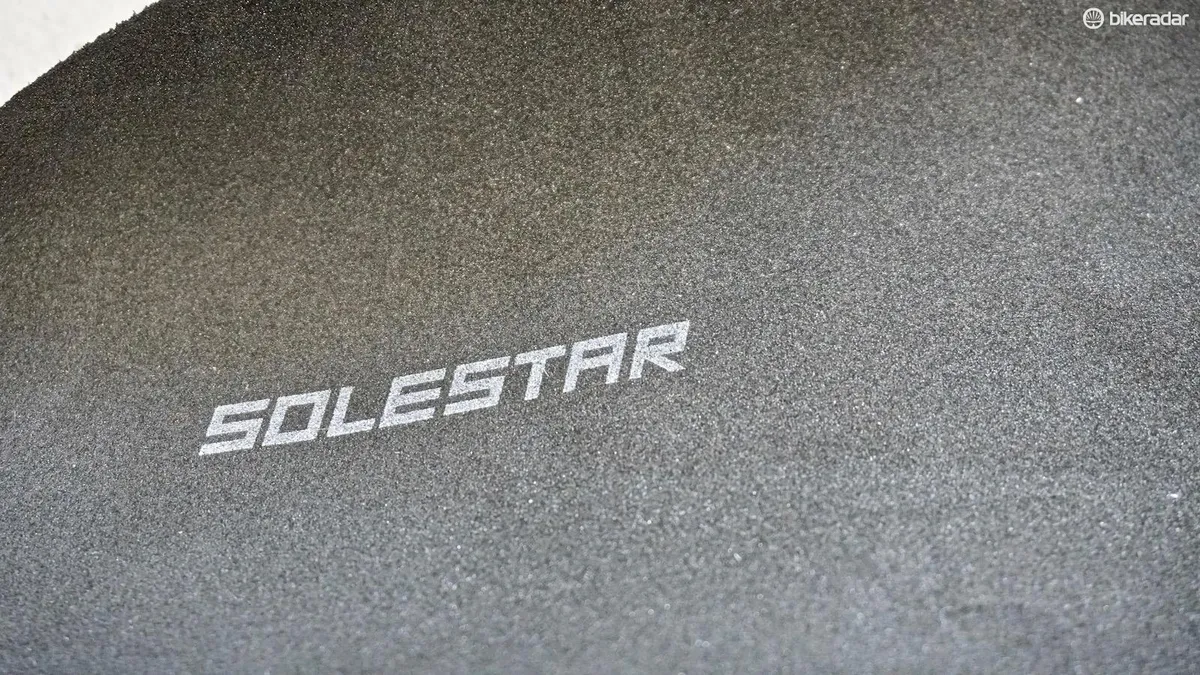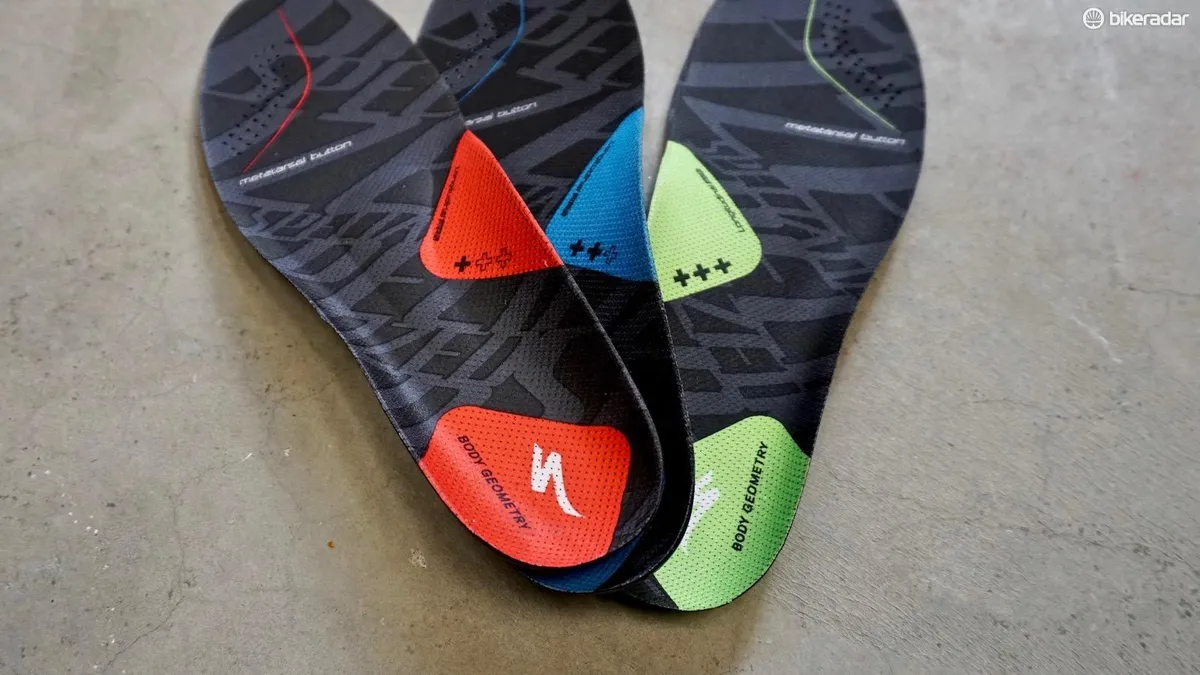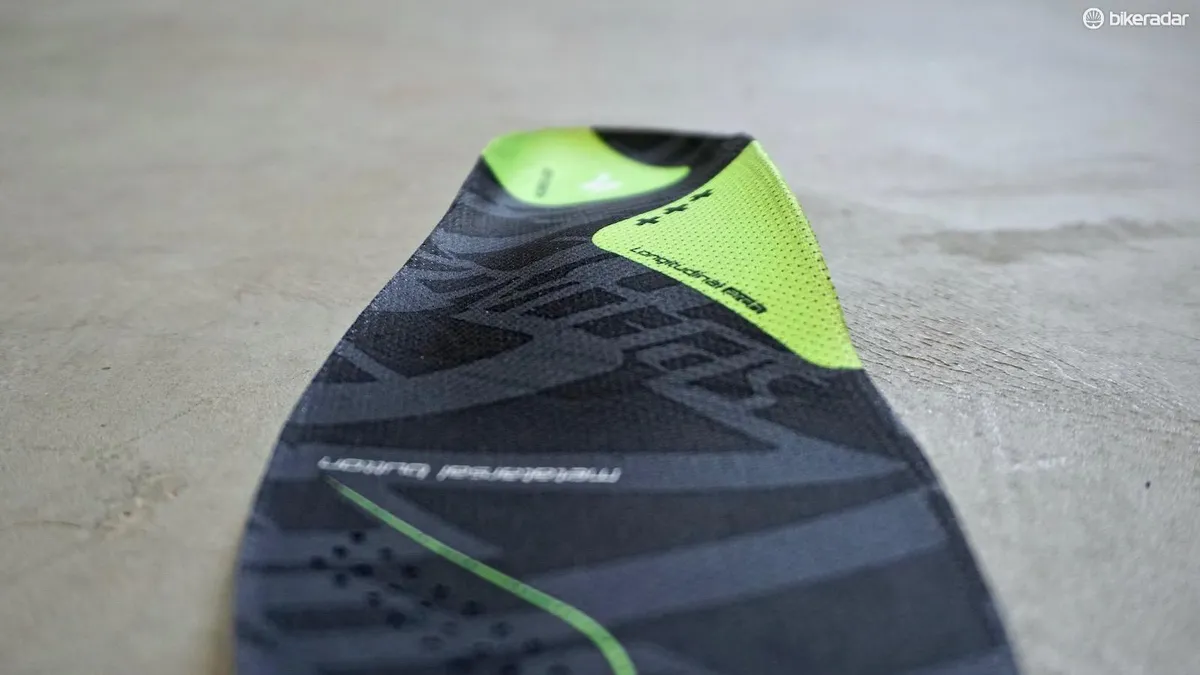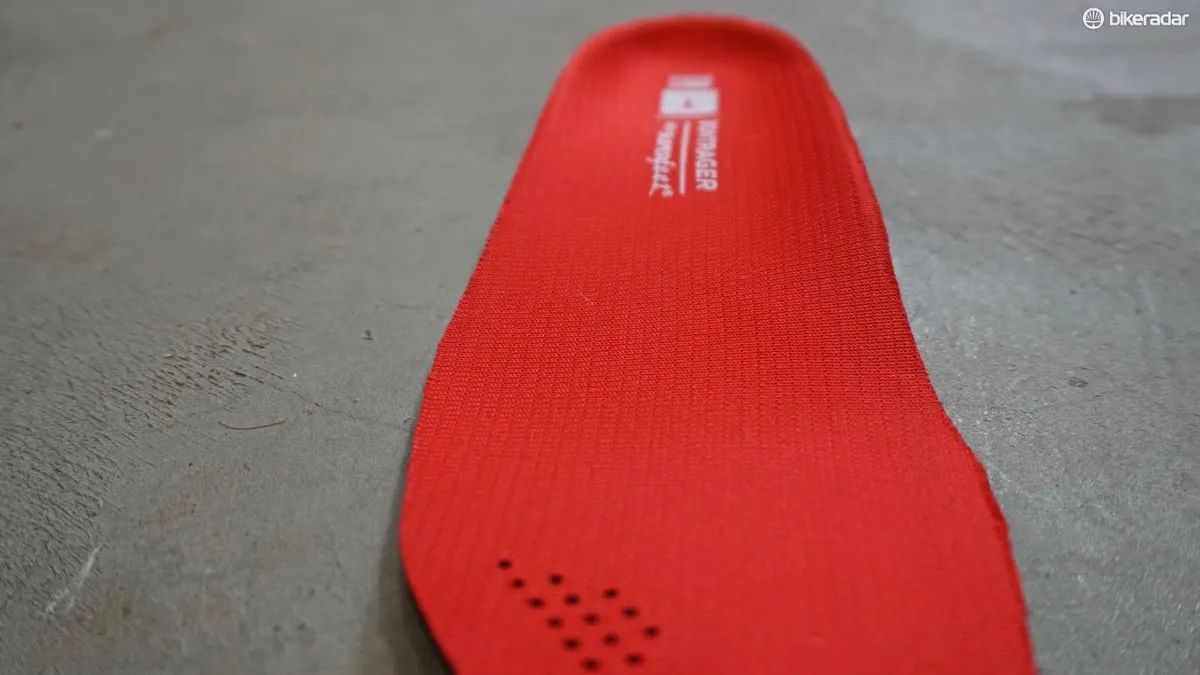There’s a reason why you should consider replacing the paper-thin factory insoles from your favourite cycling shoes. From your ankle to mid-back, proper support for your feet can prevent injury, provide more powerful pedalling and create more comfort for you overall.
- Wide shoes: why you need them and which brand makes the best
- How to install and adjust cycling cleats
- Gallery: The shiniest cycling shoes for next season
From an evolutionary standpoint (no pun intended…) humans don’t really need arch support, all things being equal. But we no longer engage in as much hunter-gatherer living, farming or even a decent amount of walking anymore. Most of us spend our days behind the cold glow of a computer, sitting in a chair that slowly creates a dependence on various external supports. So how does this affect our feet?
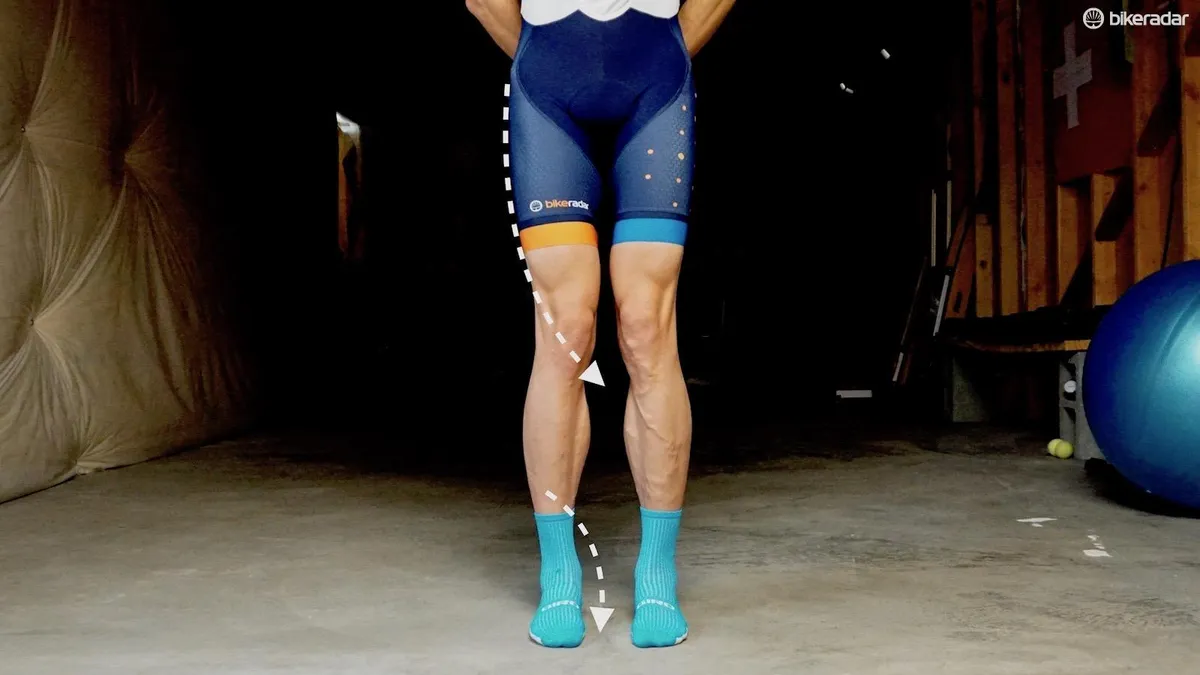
Technically speaking, we have three distinct arches in the foot — medial, transverse and lateral. These systems are comprised of a synchronous system of 26 bones, more than 30 joints, and a massive network of muscles, tendons and ligaments.
While this might seem complex, all these features serve to create a soft landing, add adaptability to our gait and create a lever to propel.
Every time we take a step, the strike of our foot is complemented by mobility in the arches — they act as a leaf-spring to absorb impact. From the landing phase onwards, the arches are capable of adapting to the ground underneath our feet, adding a small movement here and there to keep our bodies upright.
Foot strike (when walking) signals for the hip, knee and ankle muscles to work towards a stacked and stable leg. When the signal or muscles fail, the upper leg rotates inward (medially), taking with it the lower leg, the ankle and subsequent collapse of the medial arch.
When you are cycling there is no ground contact but there is a loading phase. The result is a very weak signal, or none at all, between the nervous system and our muscles. This deficiency means we fail to fire the proper muscles at the proper times when we pedal, promoting an inward collapse of the leg.
How proper support can help
While I obviously advocate exercises that encourage the natural protection and function of our arches, the ability to control the lower leg via hip musculature while on the bike is rare.
That said, there are two philosophies to how arch supports can function. The first is to serve as a mechanical ‘block’ of arch collapse, and the second is to behave as a neurological trigger, to potentially enhance the signal between the nervous system and our muscles.
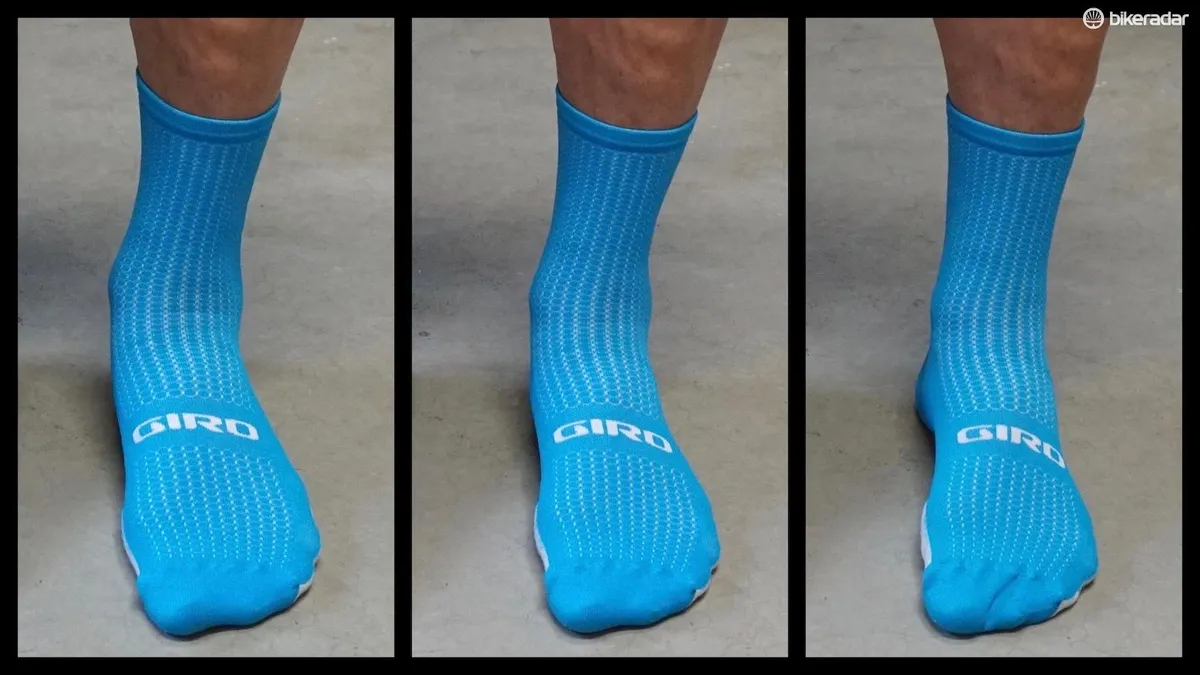
The nuances and arguments of each philosophy have been debated for decades and there’s no end in sight. I’ve witnessed riders benefit from either approach, depending on their lifestyle off the bike.
Typically, the more off-bike strengthening exercises you do, the more likely a neurological trigger will be sufficient. Meanwhile, newer riders or riders who dismiss corrective exercise and strength training are best served with a mechanical block.
The functional difference between the two is that the block approach requires more support and can easily lead to overcorrection, which has its own set of problems. Additionally, the block approach can eliminate all movement of the arch while pedalling, which is not ideal.
The magic recipe is off-bike strengthening exercises, combined with a minimalist approach to supporting the arch and good contact between shoe and the entire foot (for pressure-distribution purposes). Regardless of this, the flimsy foam insert that came with your shoes is likely to be insufficient.So, here are five great footbed options that will help you find your best support.
1. G8 Pro Series 2620
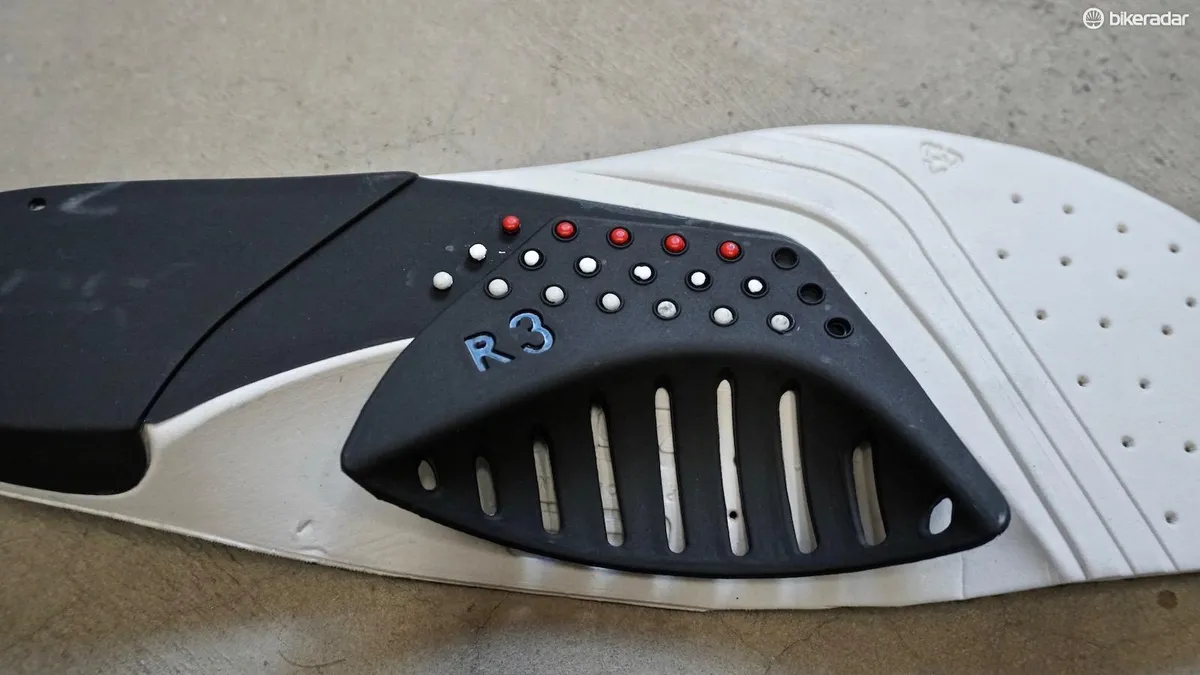
Australian-brand G8 has created a premier customisable, adjustable system that allows you to take the speculation out of finding your ideal arch support.
It's unique system approach matches the height and fore-aft placement of your arch, and can be catered to a given activity — all within a single box.
This à-la-carte approach satisfies both the neurological trigger and structural block strategies, depending on your needs. Because of the variation of pieces and attachments, there is little to no risk of overcorrecting.
Adjustability aside, the other feature that makes the G8 such a fantastic model is the fact the plastic supports are initially rigid, but mobile under heavy load. While this might seem a design flaw, it’s actually intentional and biomechanically advantageous, complementing the differences between seated and out-of-saddle pedaling foot dynamics.
The foam that the G8s use is high-density, compared to many of the other brands. As I can barely compress it with my thumb and finger, I wouldn’t anticipate the need to replace them anytime soon, which makes them seem all the more affordable.
The covering provides a nice vibration layer, but also does a good job of collecting debris, which can be annoying to look at. However, this is by no means a deal-breaker.
Given the overall adjustability and long-term adaptability, the G8s are for riders wh prioritise performance and recognise the significance an insole can have on comfort and effective pedalling.
- £84 / $111 / AU$149
2. SOLE Active Thin
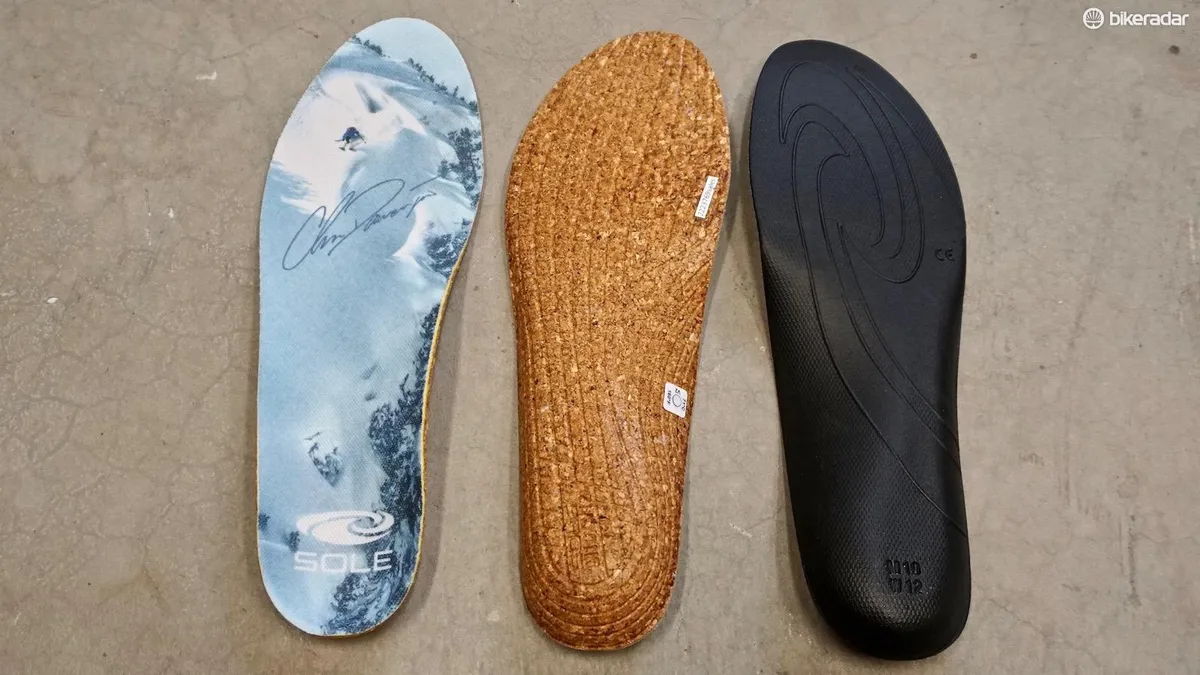
Wherever there's a need for an insole, then Sole seem to be there — providing options for cycling, running, hiking, skiing… the list goes on.
The brand's insoles have several features that make them stand out. The heel cup supports inverted or everted structures and the lateral arch is also built up more than several of the other brands. Additionally, some models address the lateral arch, which Sole accomplishes with a 'Met Pad'.
Active (recycled EVA) and Performance (recycled cork) models were included for testing. Two of the three models were made from recycled wine-bottle corks but all three are heat-mouldable, which brings noticeable improvement when done correctly.
With a very low profile, these insoles have done an excellent job sitting deep in the shoe, which can be problematic when shoe and insert aren’t made by the same manufacturer.
With heat-moulding, they sit in place even better and provide a truly comfortable and supportive surface. It’s important to think of heat-moulding as a way to conform to a shoe, as much as it’s meant to conform to a foot.
While they aren’t structurally the stiffest inserts, they certainly battle for the most overall comfort. The cork versions provide a vibration-damping quality ride that has improved the overall feel of my incredibly stiff Bont Vaypor G shoes.
- £35 / $45 / AU$90
3. Solestar BLK & Kontrol
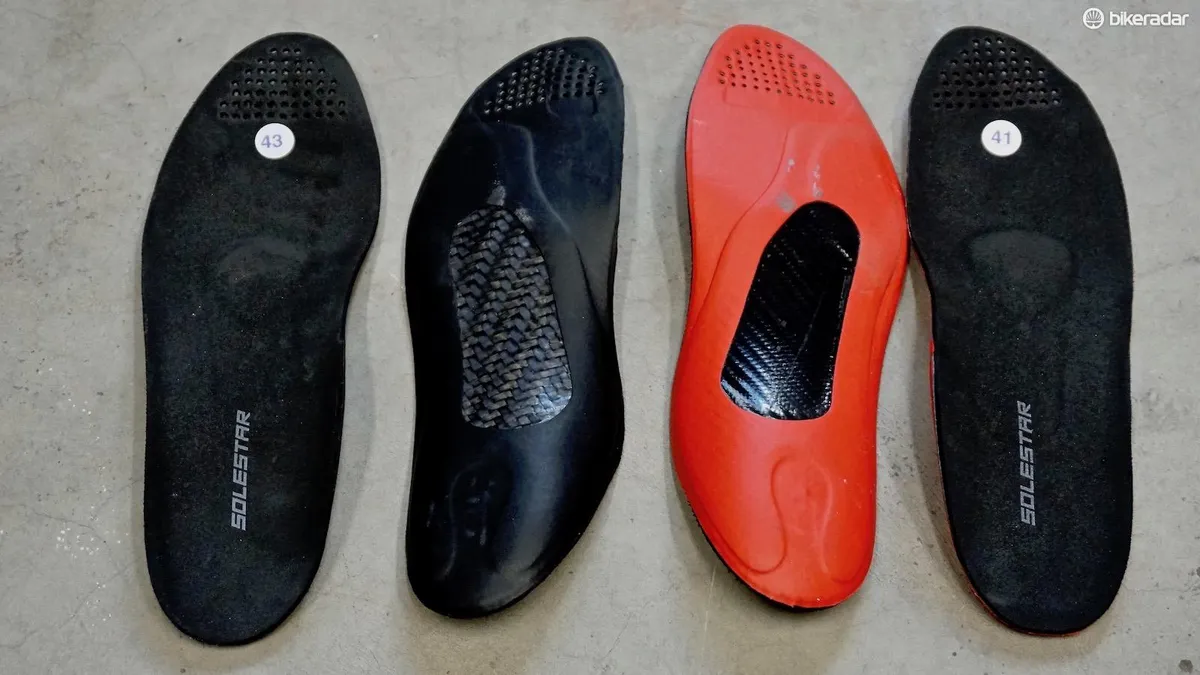
German-brand Solestar has taken top honours when it comes to premium materials and resulting price point. Both the BLK and Kontrol options are expensive by most people’s standards, but considering the support is as good as many full-custom inserts, the cost is relatively easy to justify, depending what kind of riding you do.
The medial and lateral arch supports of both models are well established, with the medial serving as the anchor for the system. There is also built-in support for the metatarsal bones.
However, a well-defined heel cup is lacking and that’s visible on the underside.
If I had to make one complaint though, it would concern the material of the top layer. While it’s designed to help keep the foot in place (which it does well), it also grab the sock often causing a bunching of material underfoot.
Solestar isn't aiming for comfort via padding, so it's good to recognise there is little to be gained in terms of vibration-damping materials. Both models are best suited to athletes looking for maximum foot hold for shorter efforts. In other words, if you're planning a five-hour gravel ride, there are other solutions.
- BLK, $169 / Kontrol, $99
4. Specialized Body Geometry SL Footbeds
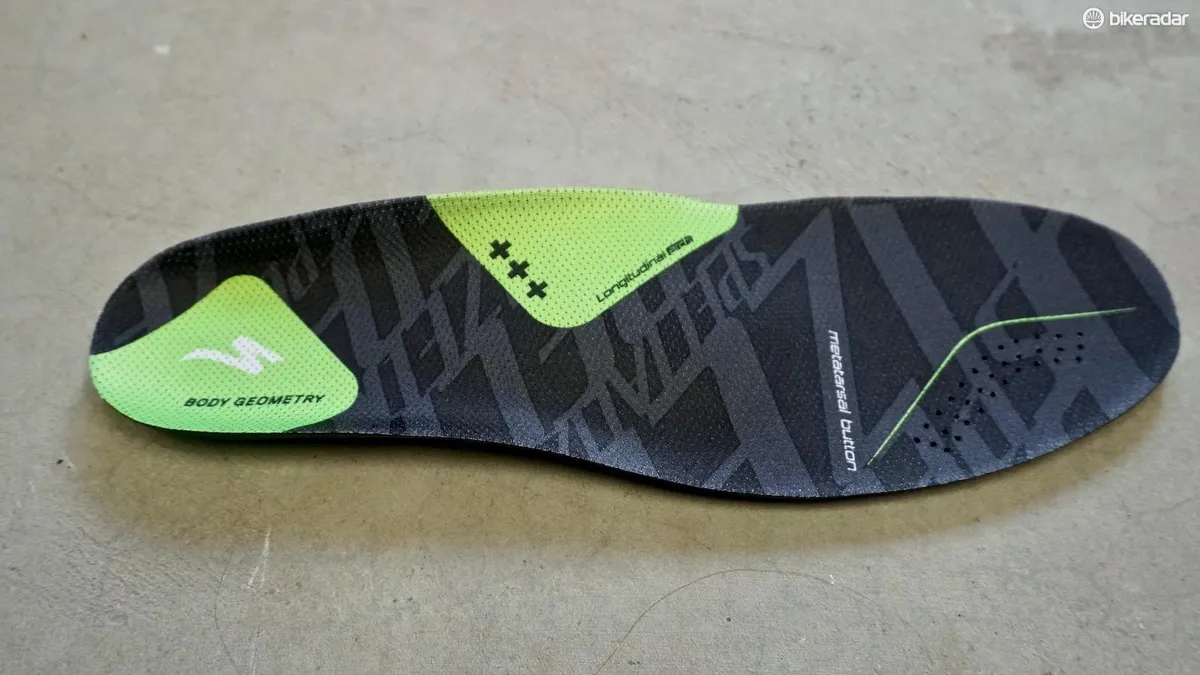
Specialized has been invested in three-level arch-support systems for more than a decade. And while the shoes that envelope them have evolved, their insert system has remained relatively unchanged throughout the years.
Body Geometry inserts have long targeted medial, lateral and transverse arch supports. One of the biggest accomplishments of these inserts is the placement of the metatarsal support. Most brands put it too far forward, but Specialized has recognized this support as an extension of the medial arch, which it is.
A unique stance from Specialized is the forward-located arch support, which is (for the most part) opposite other brands. This is something that could be ideal for some riders. There is no right or wrong to this, but Body Geometry are unique in this way and it should be noted.
The materials used with the Body Geometry supports seem less robust than some of the competitors and will likely need annual replacement, depending on how much riding you do. However, the price point is quite friendly. Considering new handlebar tape is the same price, who’s complaining? And much like new bar tape gives a bike a new feel, new insoles will give your feet a second wind.
Depending on where you most need support, this footbed could be ideal for you. Plus, the three distinct arch heights can make an off-the-shelf shoe feel somewhat custom.
- £23 / $30 / AU$50
5. Bontrager inForm BioDynamic insoles
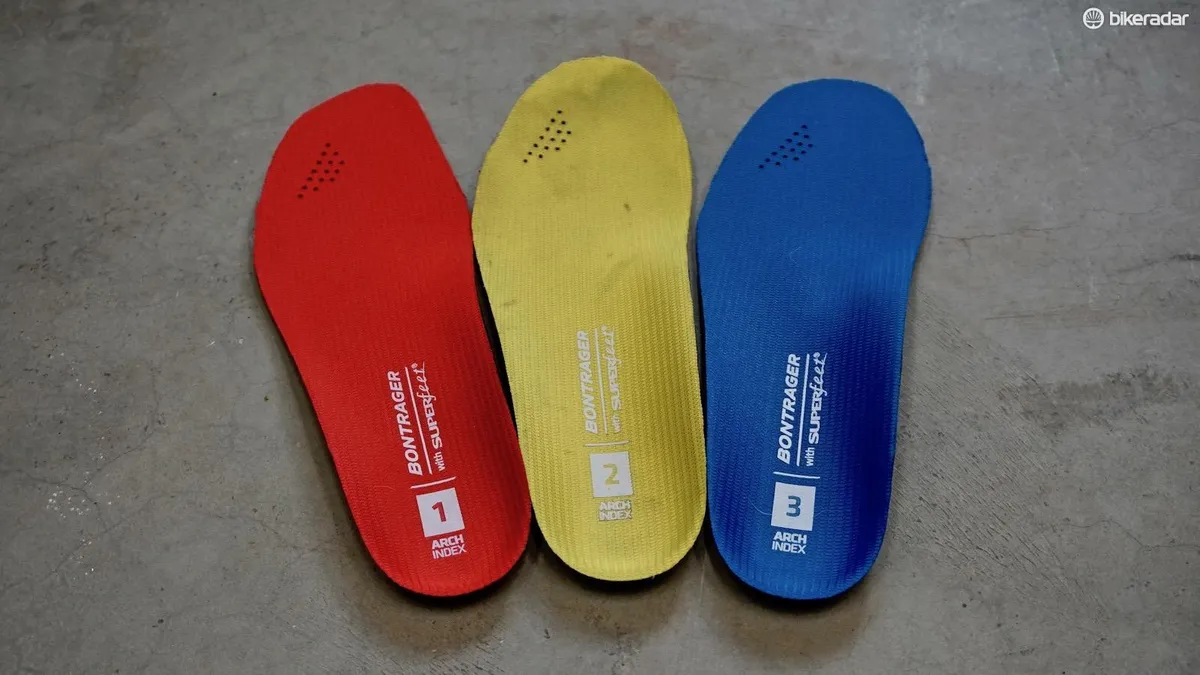
For its footbed solution Trek's Bontrager has partnered with Superfeet. And, similar to Specialized, it uses three distinct arch-support levels.
However, unlike Specialized, Bontrager has gone the Superfeet route and leverage to create what is commonly referred to as a 'navicular block', which places the support near the rear of the foot.
The navicular is a medial bone near the ankle that can be structurally supported, blocking inward roll of the ankle and preventing knee collapse. This is a solution that Superfeet has used for nearly two decades.
The medial and lateral arch supports are well-defined in the inForm insoles, but falls short when it comes to metatarsal support. Bontrager claims there is a 3D arch support, including a metatarsal arch support. If this support is indeed in place, then it’s hard to notice it in hand, and it's certainly missing when riding.However, metatarsal support isn’t comfortable for everybody, so this may actually suit your feet.
- £25 / $40 / AU$50
